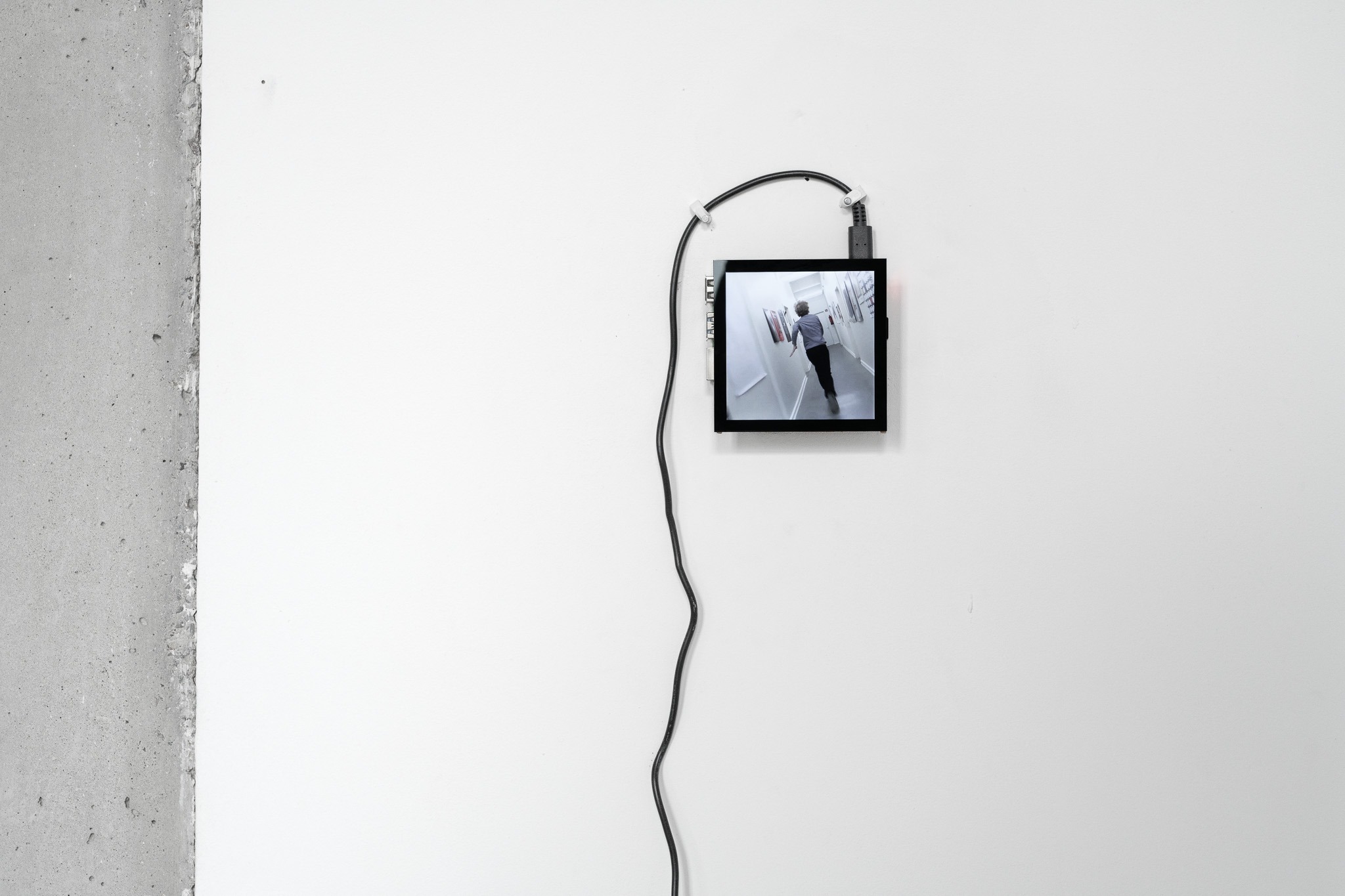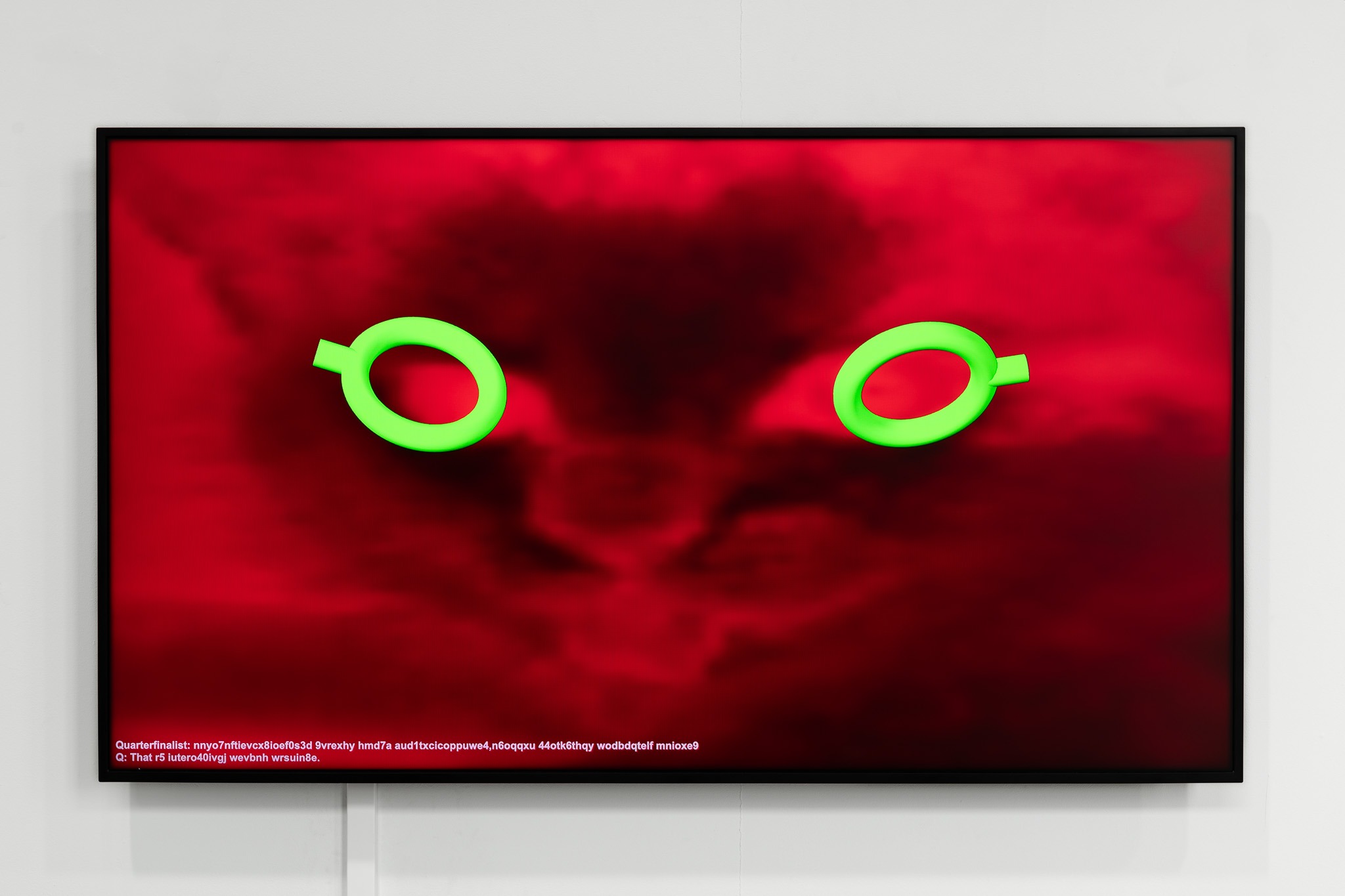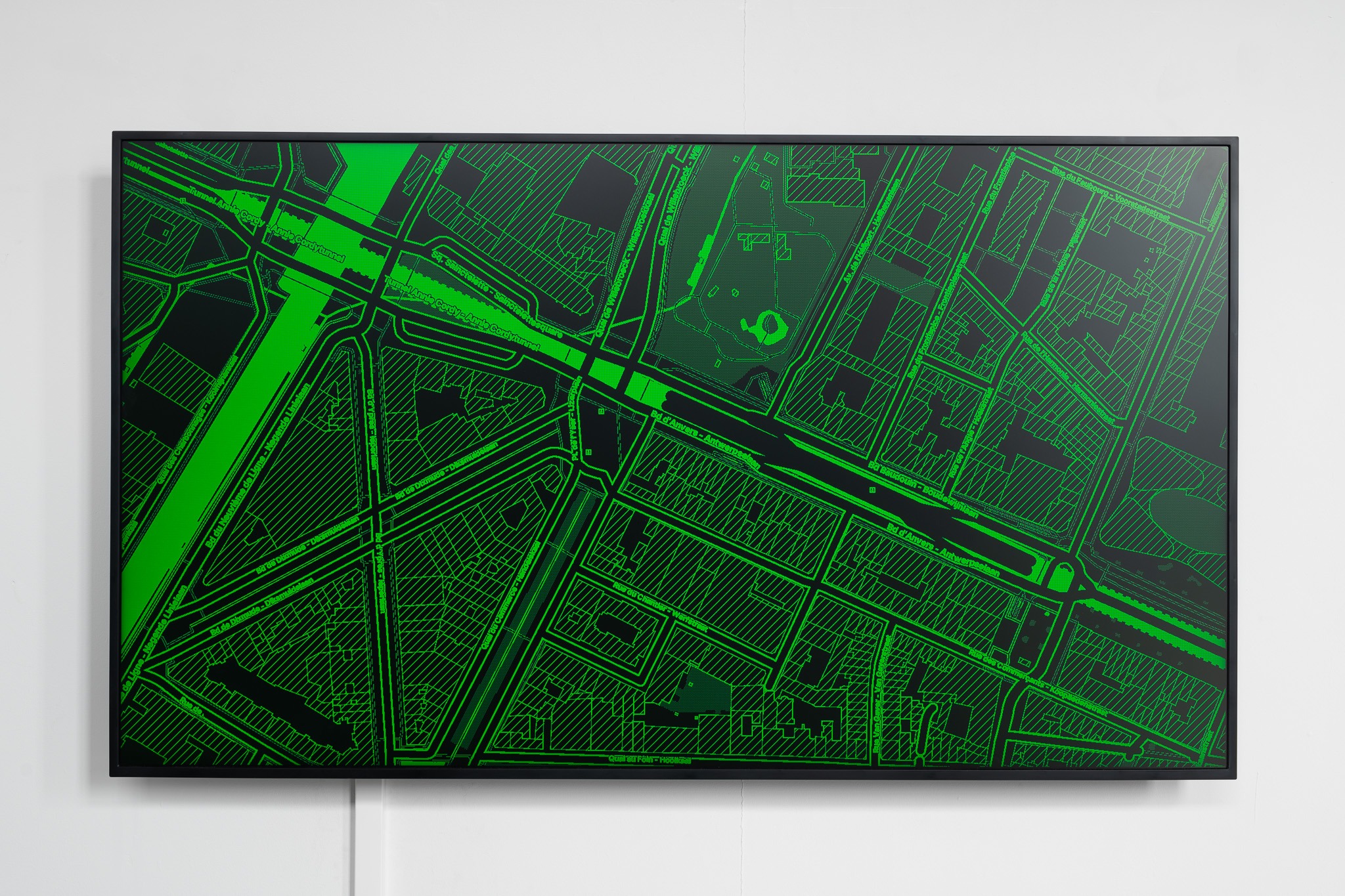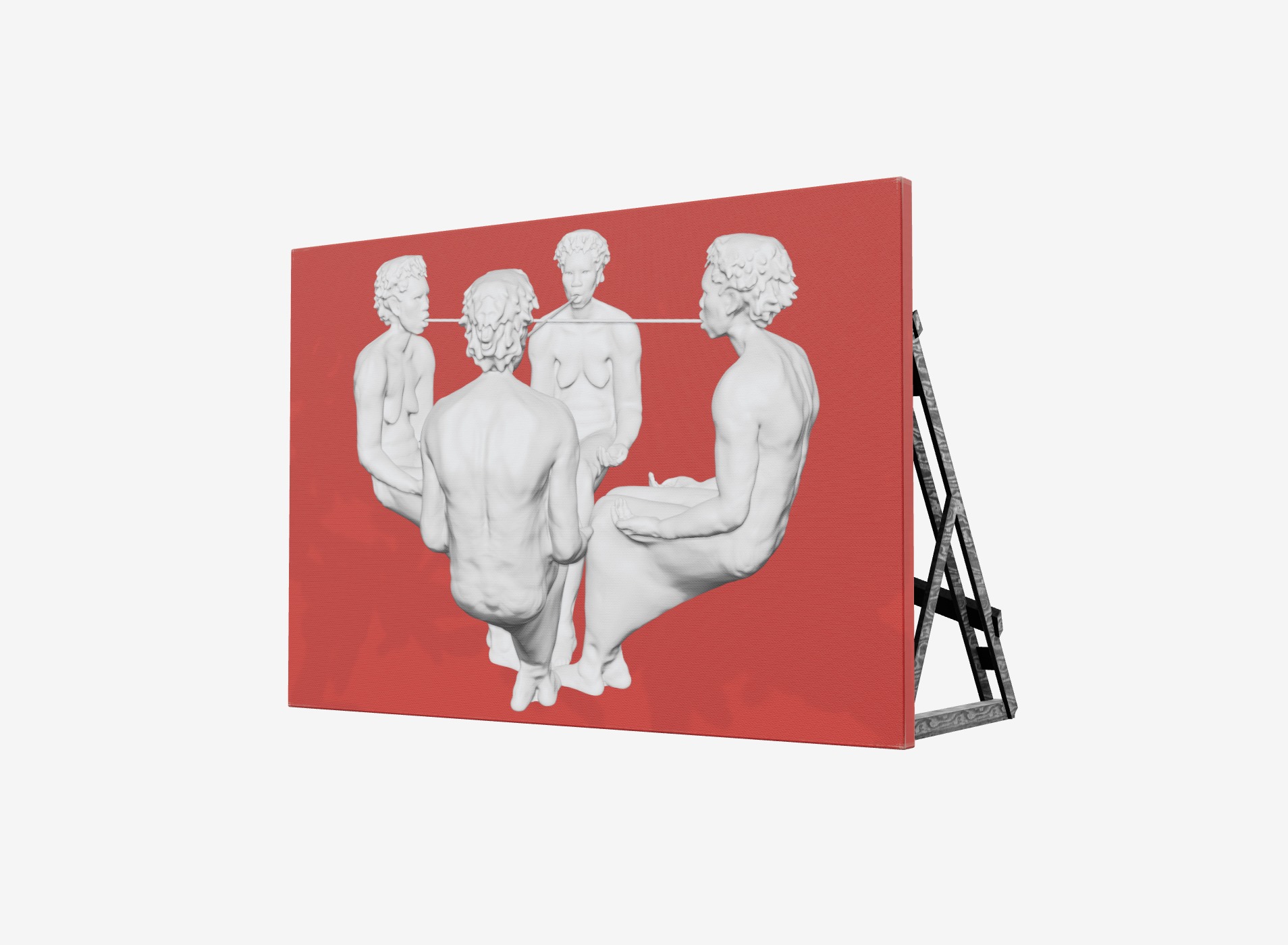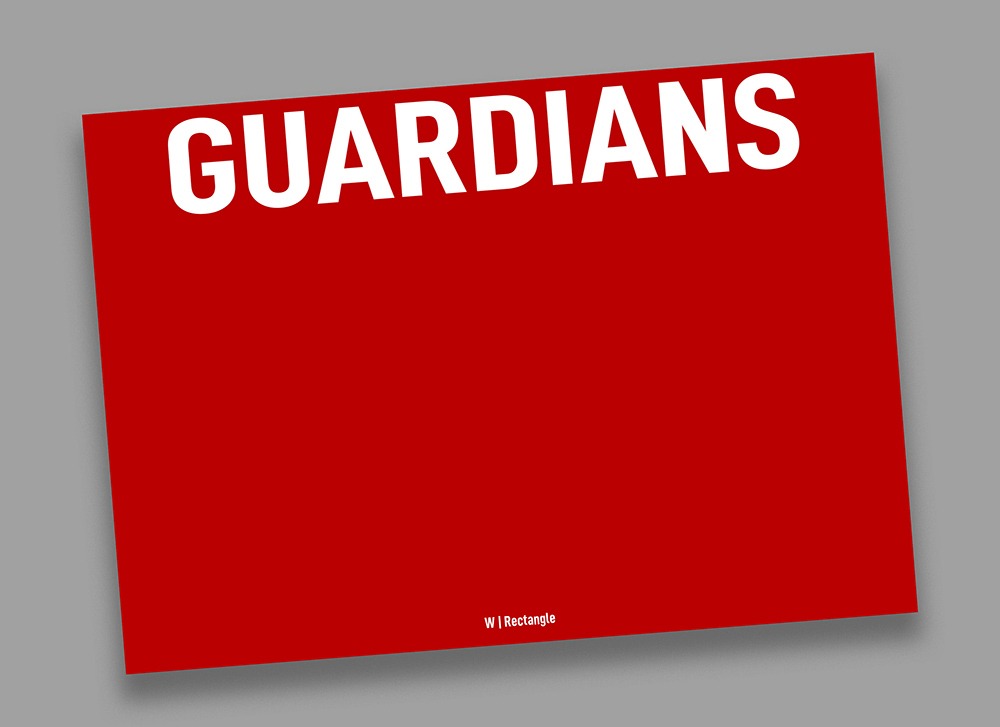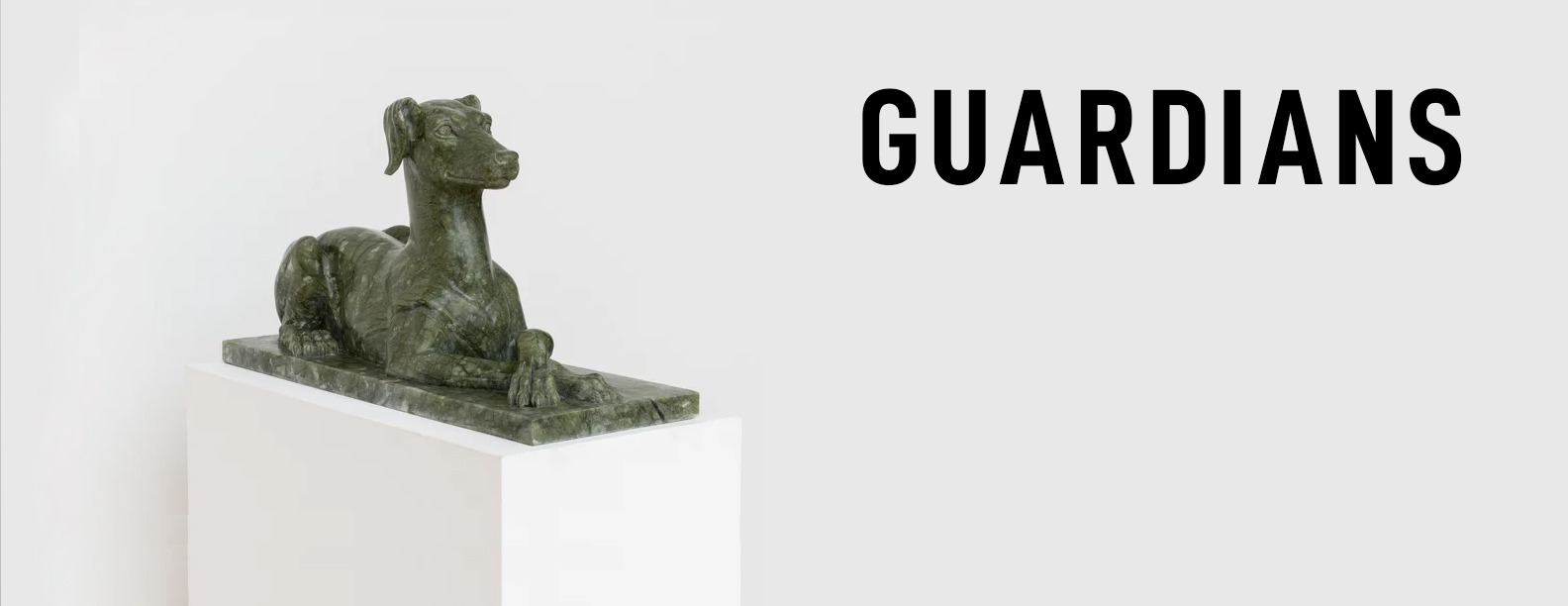
Courtesy Drei, Cologne
Auriea Harvey, Joan Heemskerk, JODI,
Lynn Hershman Leeson, Julia Scher
GUARDIANS
Opening Wednesday 24 April 2024, 5–8pm
Finissage Saturday 1 June 2024, 2–6pm
24 April – 1 June 2024
Open Thursday, Friday and Saturday, 2–6pm
Wouters Gallery
Bd d’Anvers 49, 1000 Brussels
Rectangle is thrilled to present GUARDIANS,
a joint project of Wouters Gallery | Rectangle, Brussels.
a group exhibition by net art pioneers
AURIEA HARVEY
JOAN HEEMSKERK
JODI
LYNN HERSHMAN LEESON
JULIA SCHER
This exhibition explores the multiple dualities and interpretations of guardianship, from historical mythological figures to contemporary societal and corporate control. It highlights how this concept transcends physical boundaries to become a pervasive force in our digital lives, shaping our identities in a world increasingly determined by algorithms.
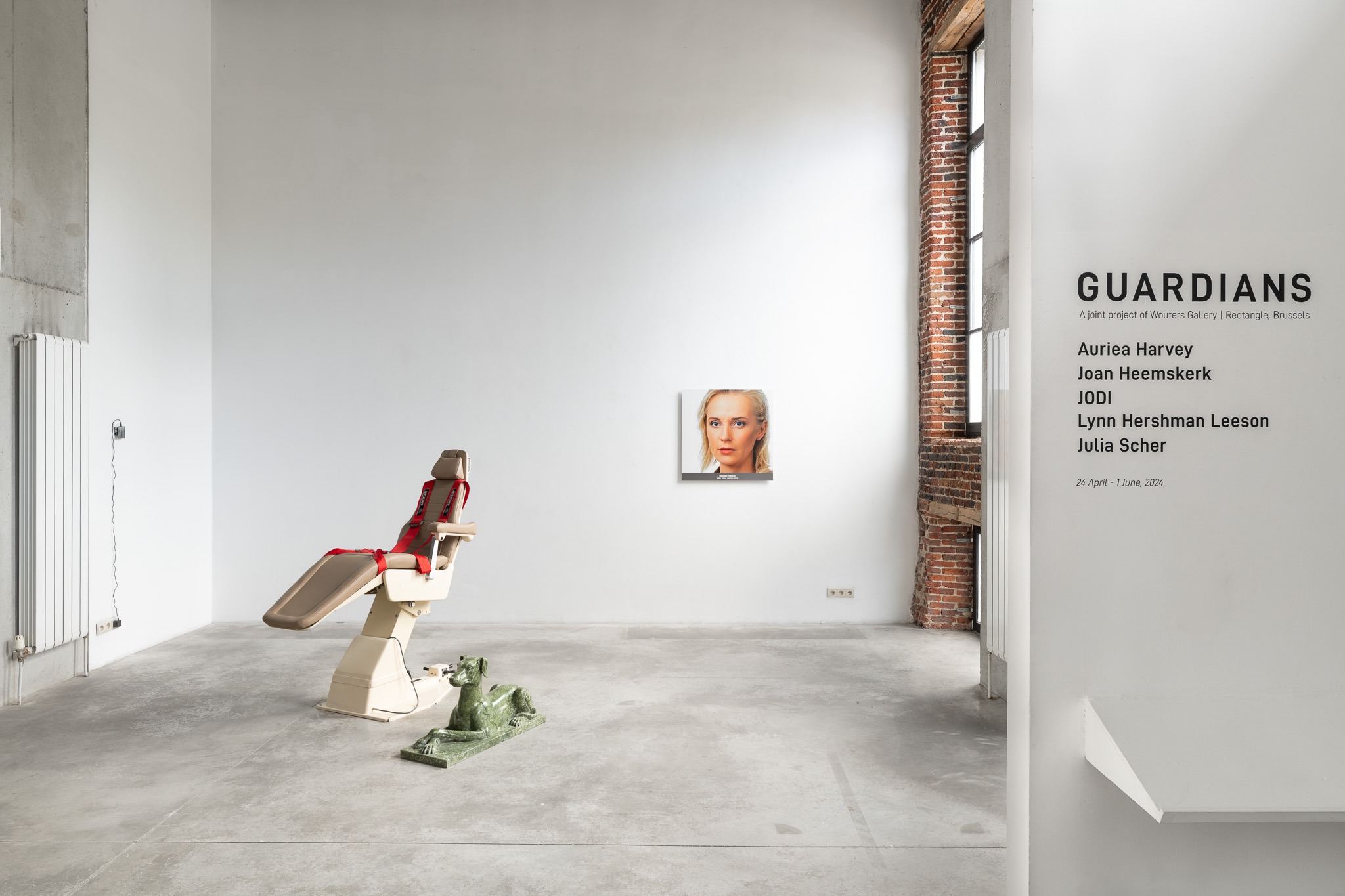
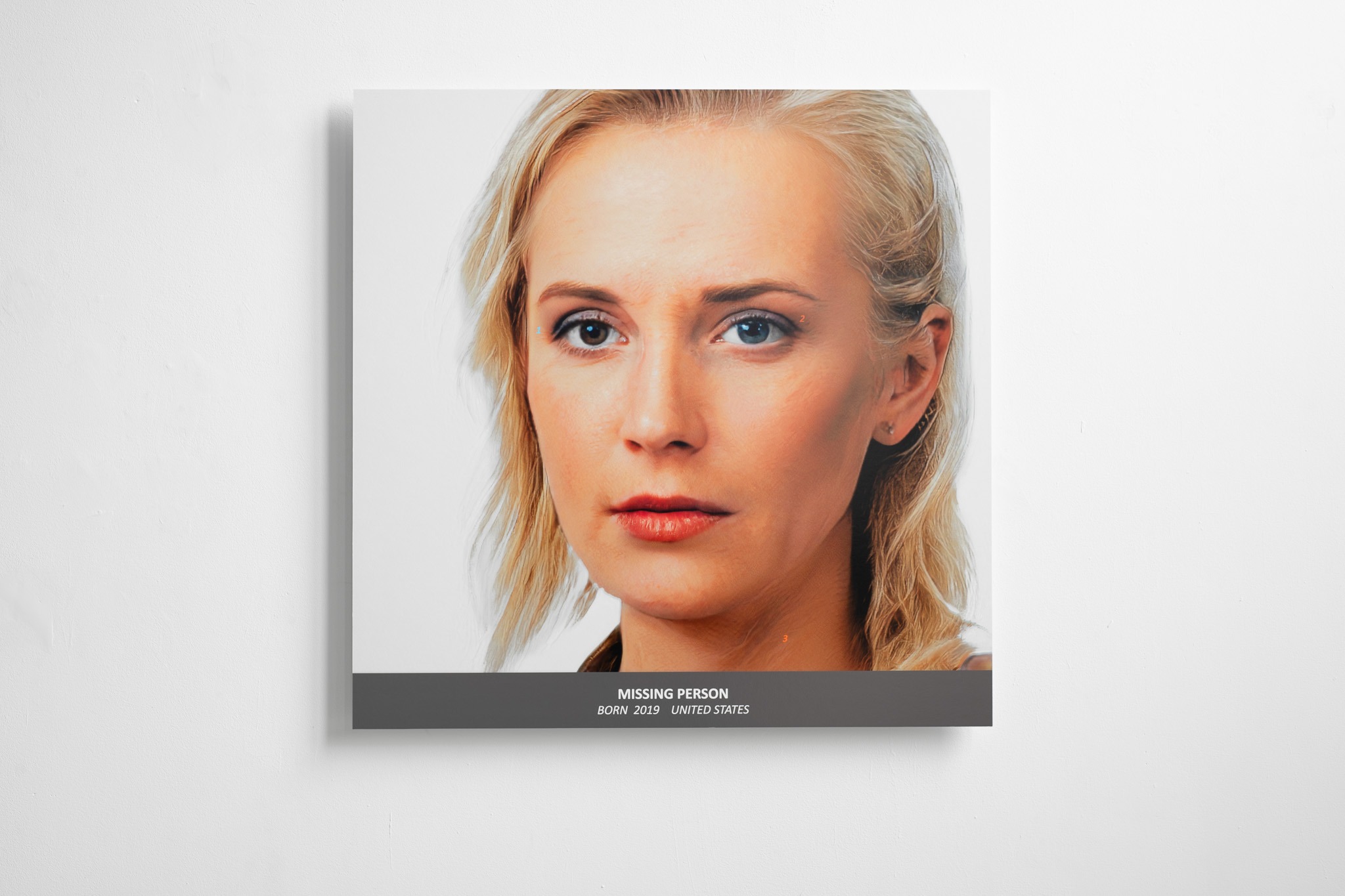
Lynn Hershman Leeson
Evidence of A Faulty Algorithm No.2
2021
Archival digital print from a generative photo
76.2 × 76.2 cm
Edition 5 + 1 AP

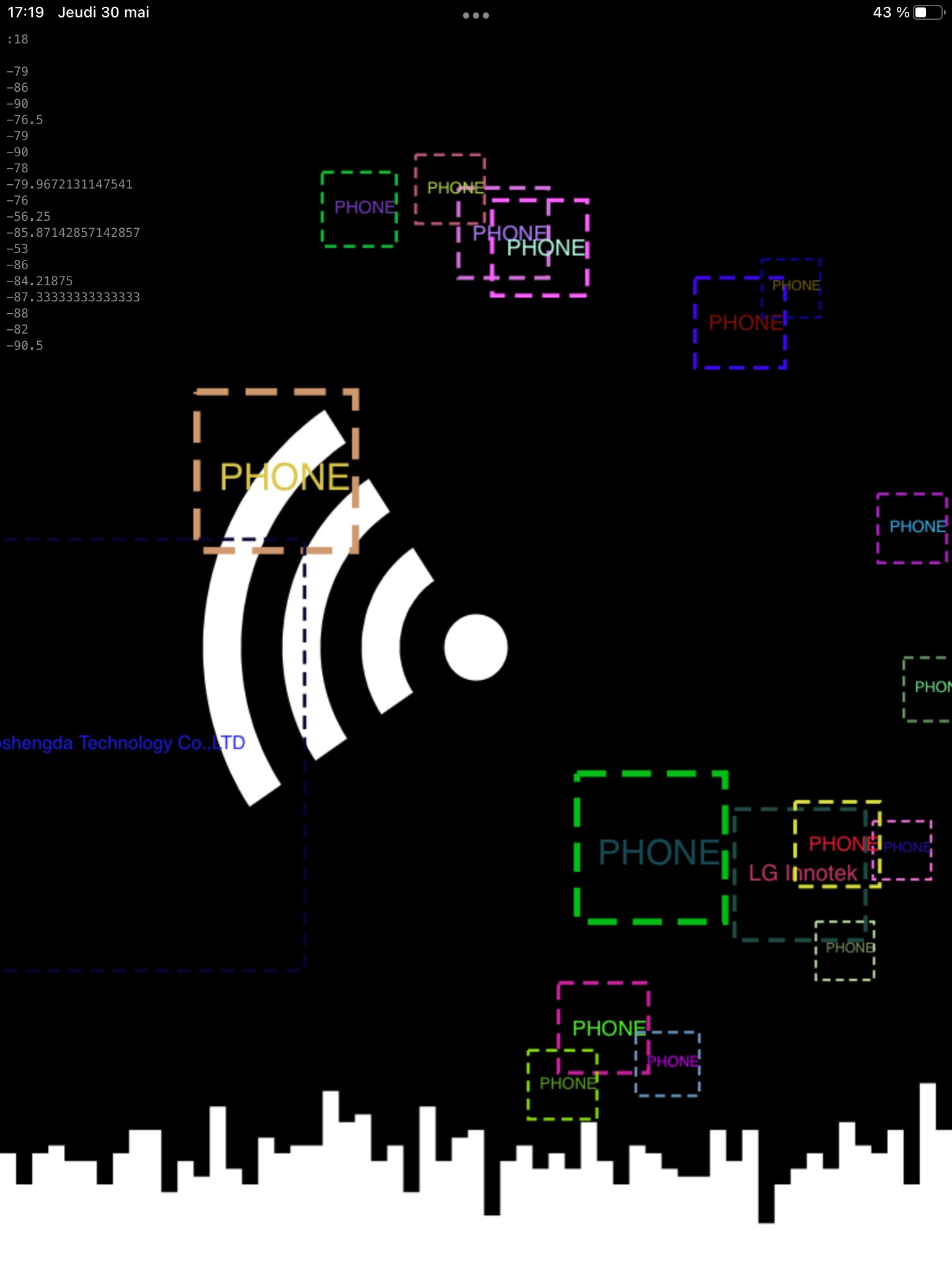
JODI (Joan Heemskerk & Dirk Paesmans)
\/\/iFi _node#6 (broom)
2018
Broom, Raspberry Pi box, Wireless USB adapter, screen
Variable dimensions
Edition 3 + 2 AP

Joan Heemskerk
Q & Q ( Qliza)
2020
Website / html files
Variable dimensions
Edition of 5 + 1 AP
Joan Heemskerk
Visitors
2021
Website / html files
Variable dimensions
Edition 5 + 1 AP
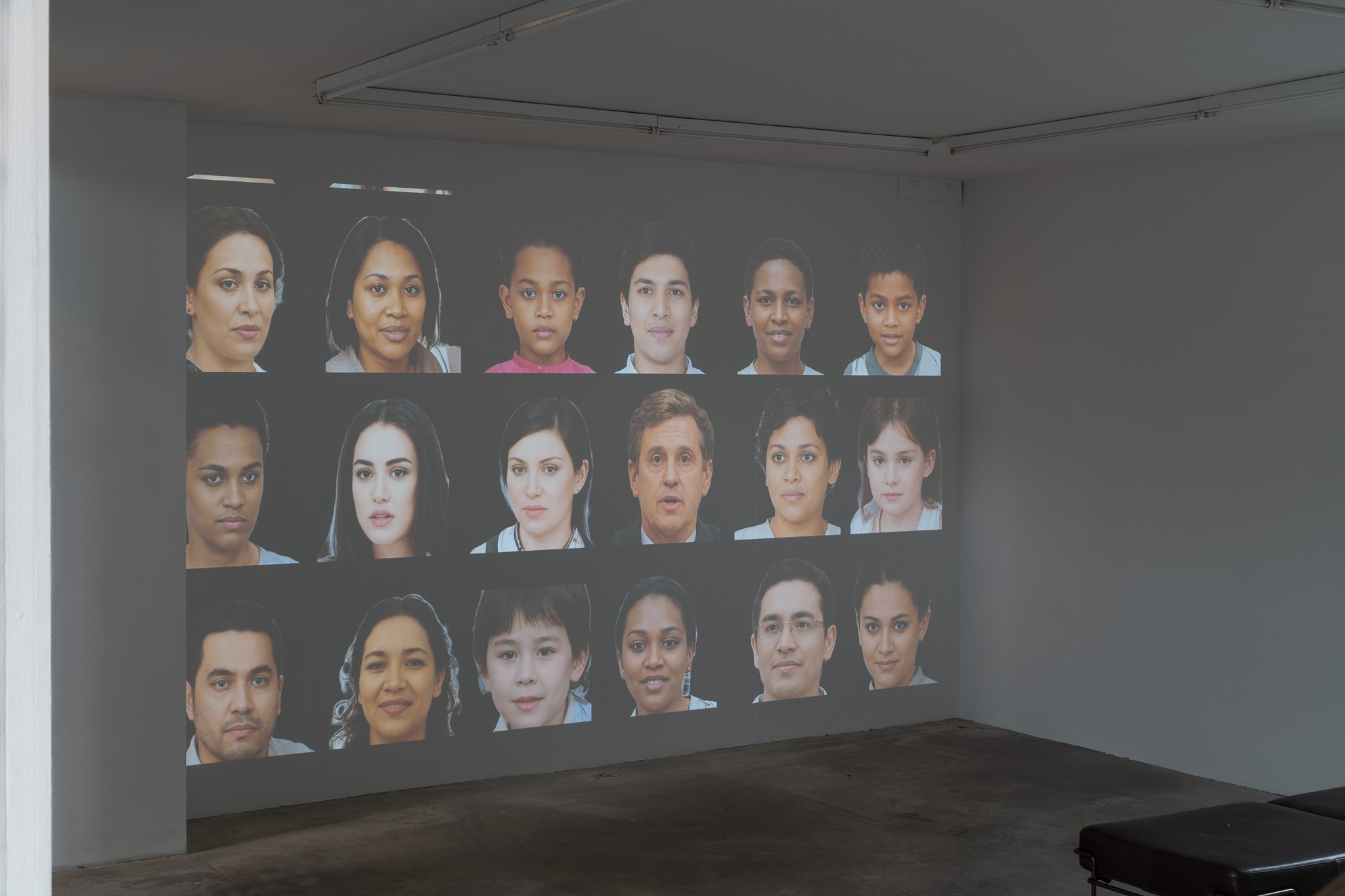
Lynn Hershman Leeson
Logic paralyzes the Heart
2022
Video, colour, sound
13:53 min
Edition 5 + 1 AP
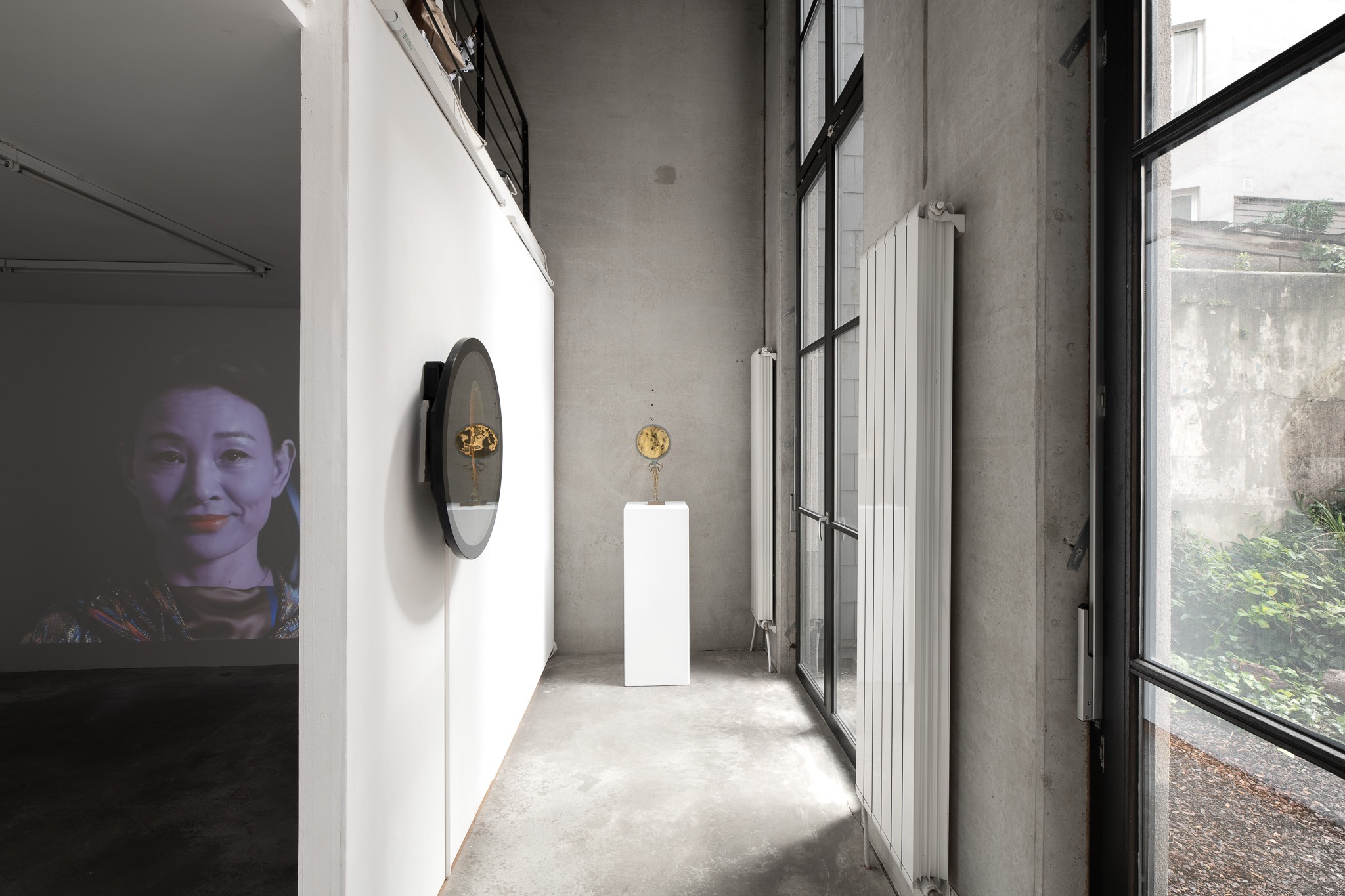
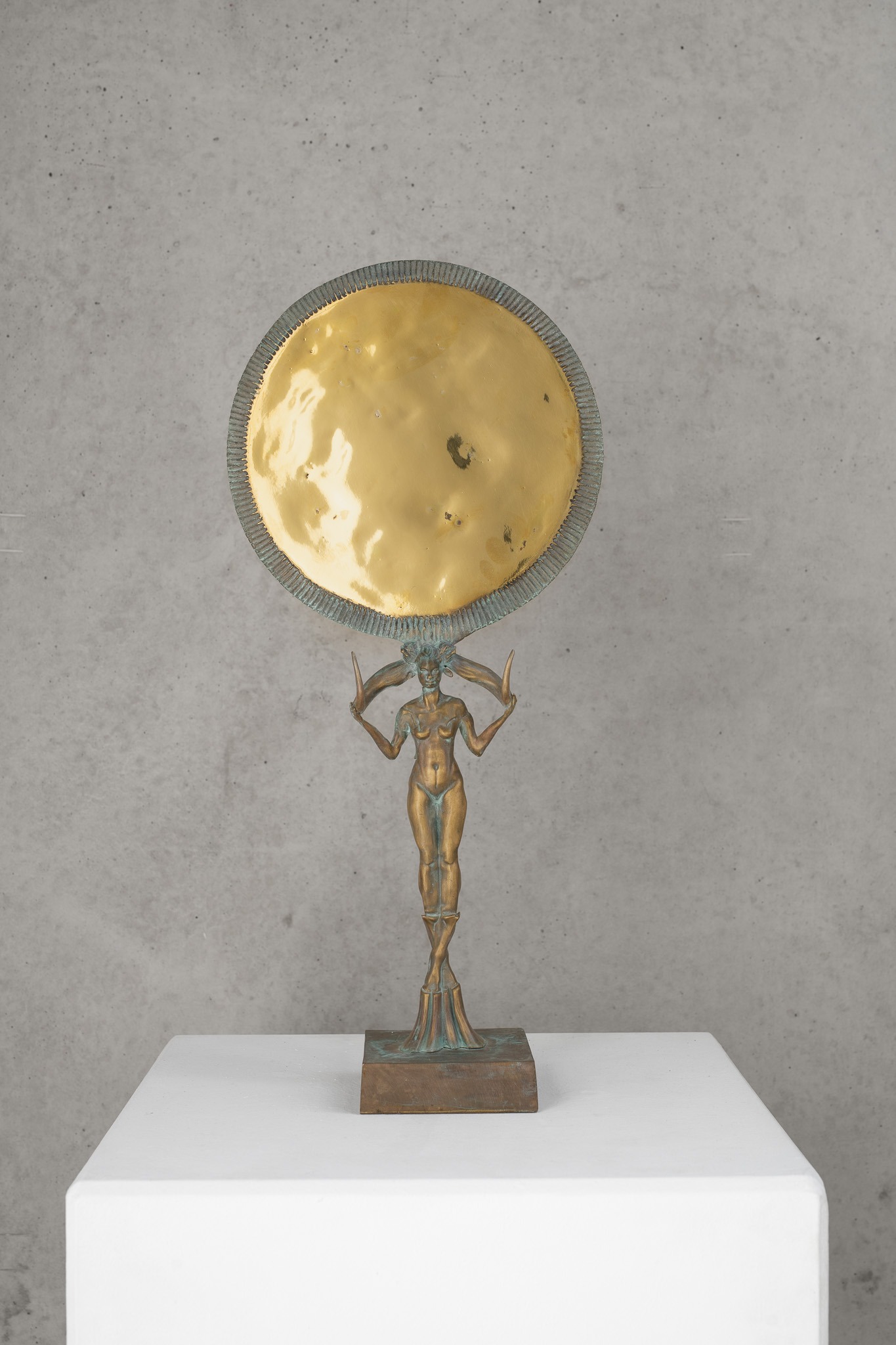
Auriea Harvey
Minomirror
2023
Bronze
26 × 6.5 × 50 cm
Edition of 3
Courtesy of the artist and Upstream Gallery, Amsterdam
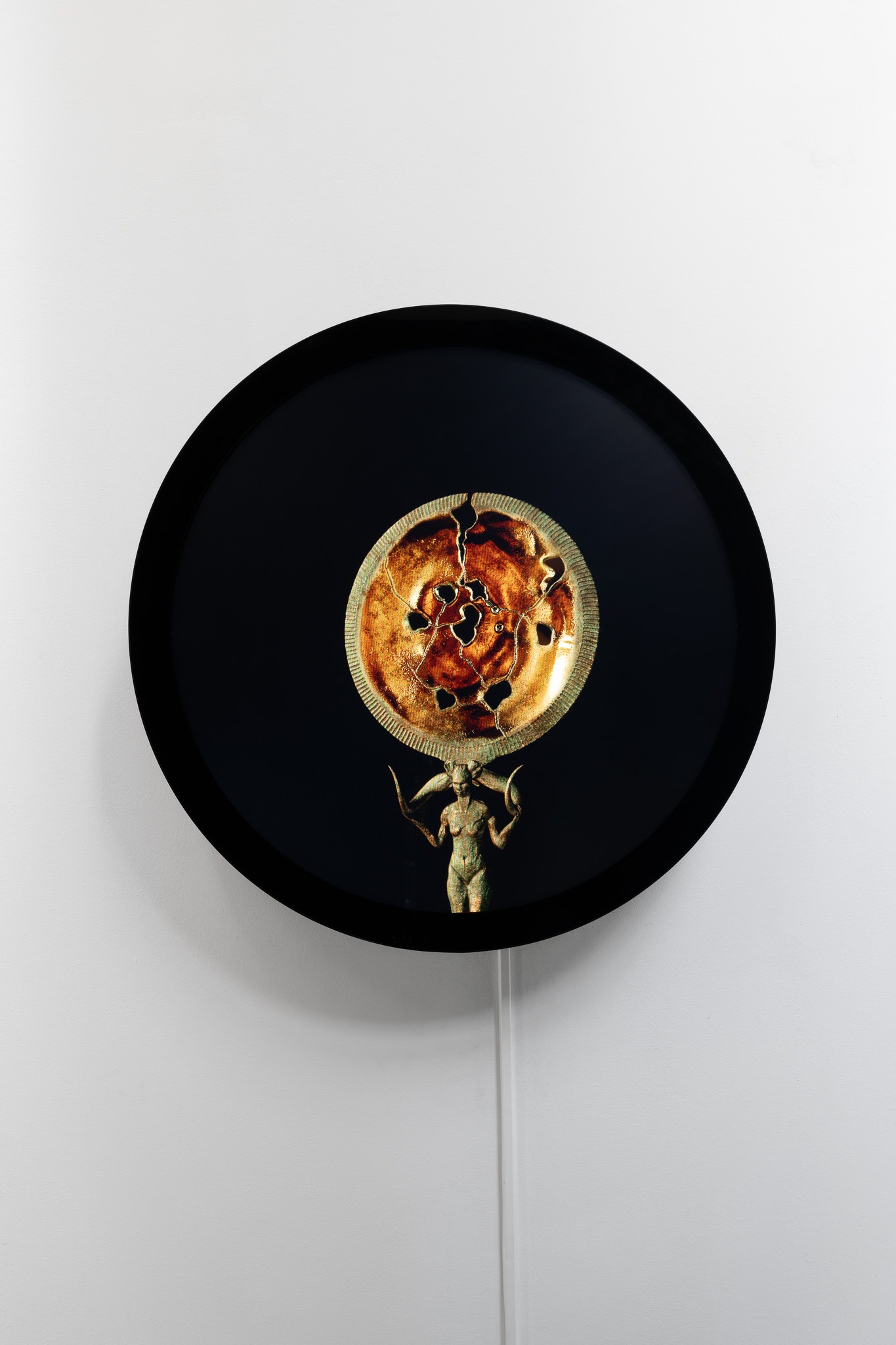
Auriea Harvey
Mirror v1-dv1 (Minoriea, cancelled)
2023
Digital sculpture in coded environment, NFT
Dimensions variable
24” touch screen (68cm diameter)
Edition of 3
Courtesy of the artist and Upstream Gallery, Amsterdam
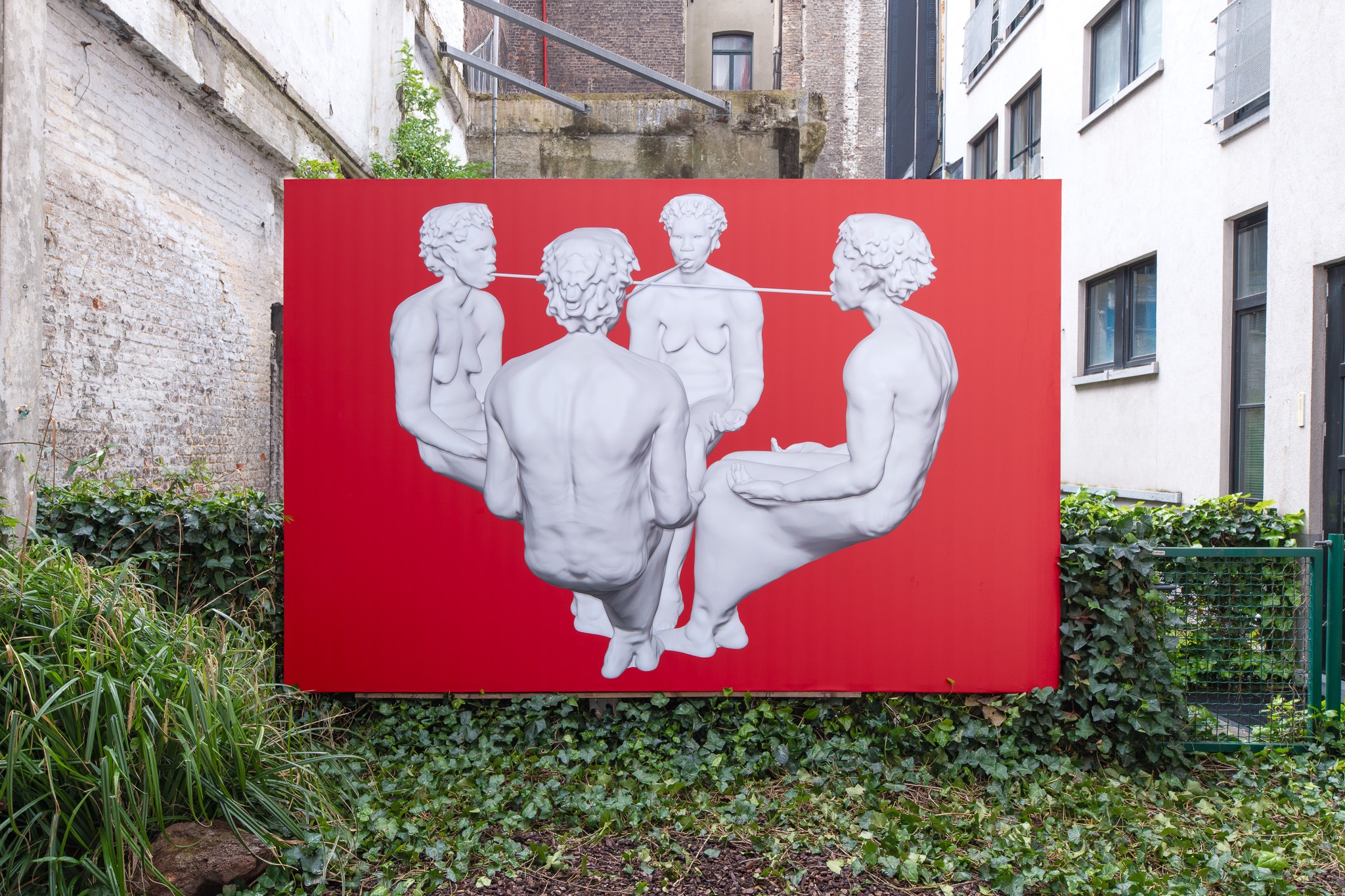
Auriea Harvey
Origin
2024
(NFT)
In the Iliad, Homer describes Aegis as a surface of gold like scaly snake-skin that sometimes appears with serpents, and others, with the Gorgon herself. It is often associated with the Greek goddess Athena, who wears it for protection either as a shield or an animal skin. The Aegis can unleash the roar of ten thousand dragons, or create powerful windstorms and thunders. It offers protection like an armour, and exerts control as fear. Aegis is a physical and magical object whose power lies in its immaterial force to coerce.
The modern concept of aegis means to do something under the protection of a strong force. The meaning is somewhere in between control or conditioning; sponsorship or guidance. Today, aegis gives its name to warfare such as Aegis Combat System, also to a private military and security company in the UK, or to an experiment at CERN about antimatter. Aegis has come to signify both control and protection.
Like any myth, Aegis is perceived as less than science, but as an untrue or unworthy force. Its opposite, logos, represents the truth. Regardless of its sciencelessness, a myth contains messages and metaphoric truths about how to live, and provides a worldview that carries on a perspective that we use to navigate the world. Scientific and technical thinking is not as far removed as we think: the development of a technology is not universal but situated. The philosopher Yuk Hui explains it as cosmotechnics, as a way to refer to the ways in which technics emerges under specific cosmological conditions. For him, there is no binary opposition between myth and science, only a progression between the two.
We understand the digital as combination of devices, practices and experiences. It appears as an invisible form of control, an encrypted surveillance mechanism that we understand little and trust much. It works like a double-edged sword, fluid and immaterial, exerting control, monitoring us; and, at the same time, protecting us, guiding us through this second life we now have to navigate. It is a technics. And, like any other, it is also rooted in a particular cosmological vision, and has also developed its own myths. Myth and science are intertwined.
If we were to reconstruct the Aegis for the digital realm, one would need to think again about today’s forms of protection and control. But the myth of protection is gendered in that it positions men as the defenders and guardians of women’s physical well-being and security. It associates security and control with masculinity, and vulnerability and dependence with femininity. In this exhibition, the artists question the legitimacy and acceptability of a model of protection that has lost its value, especially when it comes to the digital sphere.
Under the Aegis, they speculate on the duality of the guardianship, looking into the progressive movement between myth and science. The artworks in the exhibition become tangible experiences that reflect on how digital technologies are immaterial forces that are coercive. In this way, the artists rewrite the myth of guardianship in digital terms, reclaiming and reappropriating the Aegis that has always been theirs.
Aegis
Written by Barbara Cueto
Works
Auriea Harvey
Origin (billboard)
2024
glb
Edition of 100 (NFT)
Documentation
Exhibition Catalog
Text : Barbara Cueto
Edited by Rectangle
pdf (NFT)
TATE
2019
Christiane Paul’s keynote presentation was part of ‘Lives of Net Art’, a series of events exploring how contemporary artists use the internet, as well as reflecting on the possibilities the internet has offered artists from the 1990s to the present day.
Rhizome x MoMI Present ArtBase Anthologies
with Auriea Harvey @ Onassis ONX
2024
A conversation about net art history with artist Auriea Harvey, hosted by Rhizome in partnership with Museum of the Moving Image. The event marks the launch of ArtBase Anthologies, Rhizome’s new initiative offering perspectives on digital art history through selected works.
Arts at CERN
Collide Interviews
2024
Joan Heemskerk winner of the first Collide Copenhagen Award, talks about the groundbreaking work of her net art collective JODI, her CERN project Alice & Bob after Clay +=-> Hello, World! and the potential of a new universal language.
more info
Biography
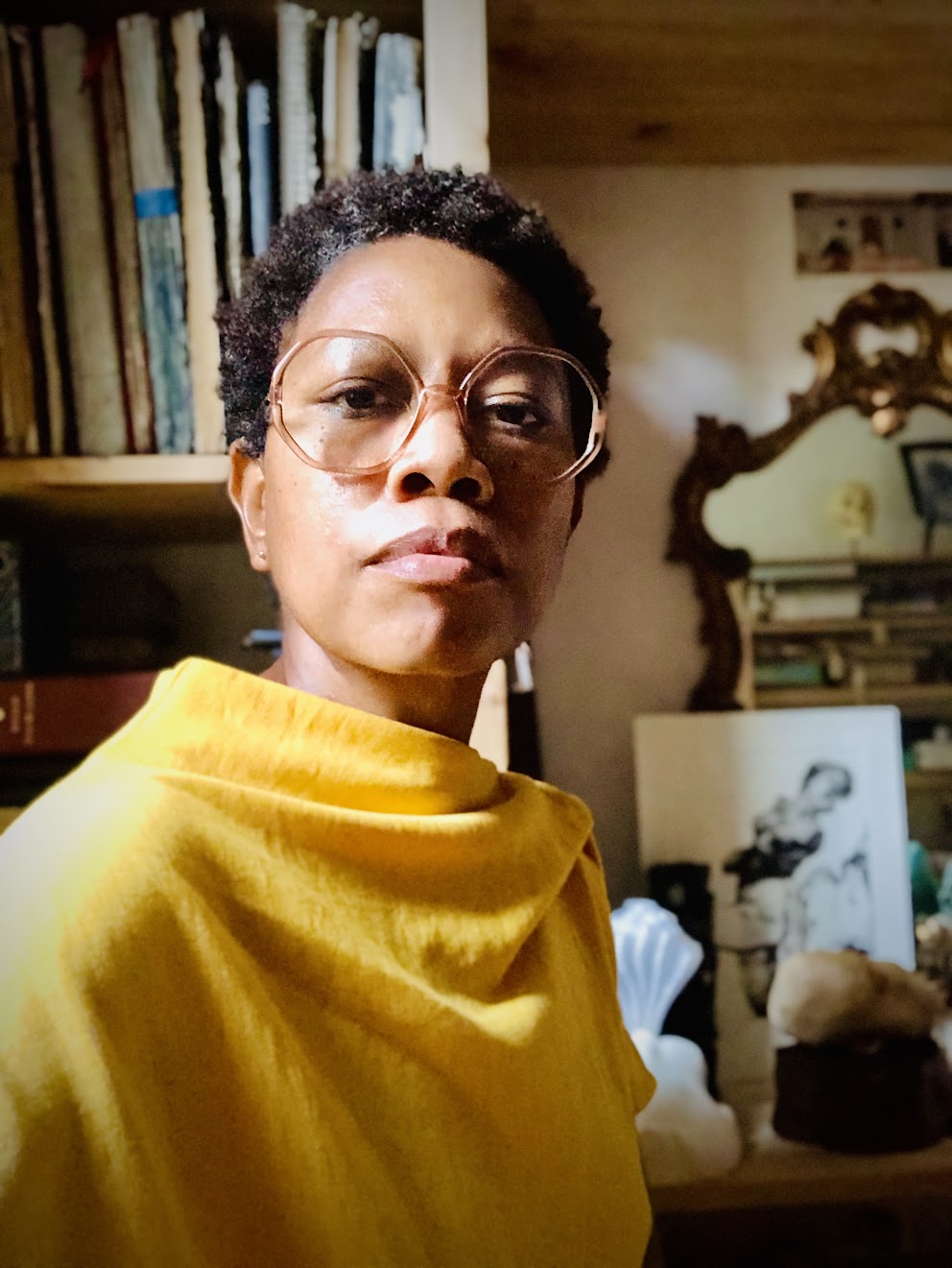
Auriea Harvey is a digital artist and sculptor living and working in Rome. Her practice encompasses virtual and physical artworks created with a blend of digital and handmade production. Drawing from her extensive experience in net art and video games, she brings a synthesis of mythology, autobiography, art historical reference and imagination – made visible through form, interaction and immersion. Auriea is engaged across time, media, and material to define what sculptural production means in the present moment. Her work can be found in the collections of the Whitney Museum of American Art, Buffalo AKG Art Museum, KADIST Collection, Rf.C Collection, and Rhizome’s Net Art Anthology. She has exhibited widely with international success including exhibitions at the Tinguely Museum, Basel; the Victoria & Albert Museum, London; the New Museum, New York; and ZKM, Karlsruhe.

Joan Heemskerk is a Dutch contemporary artist. Her artistic practice is centred around the internet, with a current focus on exploring the potentials of web4, spanning from cryptography systems to the realm of quantum non-binary computing. Her diverse body of work includes photography, video, software, games, websites, NFT, performances and installations.
_ She is also a member of the art collective JODI >>>
https://joanheemskerk.com

JODI, or (jodi.org) – pioneered net.art in 1995. JODI were among the first artists to investigate and subvert conventions of the Internet, computer programs, and video and computer games. Radically disrupting the very language of these systems, including visual aesthetics, interface elements, commands, errors and code. JODI stages extreme digital interventions that destabilise the relationship between computer technology and its users by subverting our expectations about the functionalities and conventions of the systems that we depend upon every day.
JODI’s work is featured in most art historical volumes about digital and media art, is exhibited worldwide in ; Documenta-X; Stedelijk Museum, Amsterdam; ZKM; ICC; CCA; Guggenheim; IMAL; Centre Pompidou; Eyebeam; FACT; MoMi; Harvard Art Museums; Rhizome; MoMa, among others.
http://jodi.org

Lynn Hershman Leeson
Over the last five decades, artist and filmmaker Lynn Hershman Leeson has been internationally acclaimed for her art and films. Hershman Leeson is widely recognized for her innovative work investigating issues including: the relationship between humans and technology, identity, surveillance, and the use of media as a tool of empowerment against censorship and political repression.
Lynn Hershman Leeson is a recipient of many awards including a Siggraph Lifetime Achievement Award, Prix Ars Electronica Golden Nica, and a John Simon Guggenheim Memorial Foundation Fellowship. And in 2022, she was awarded a special mention from the Jury for her participation in the 59th International Art Exhibition of La Biennale di Venezia. In 2023, Pratt Institute of Art in NY awarded her with an Honorary Doctorate. Creative Capital awarded her with their Distinguished Artist Award in 2023. SFMOMA acquired the museum’s first NFT from Hershman Leeson in 2023.
Her six feature films—Strange Culture, Teknolust, Conceiving Ada, !Women Art Revolution: A Secret History, Tania Libre, and The Electronic Diaries—are in worldwide distribution. Artwork by Lynn Hershman Leeson is featured in many public collections including the Museum of Modern Art, and The San Francisco Museum of Modern Art.
She is represented by Bridget Donahue, New York, Altman Siegel, San Francisco, Wouters Gallery, Brussels, and ShanghART, China.
https://www.lynnhershman.com/

Julia Scher (1954) USA.
Inspired by the French philosopher Michel Foucault and the sociologist Gary T. Marx, Julia Scher’s work focuses on the subjects surveillance and cyber-sphere. Aiming at the exposure of dangers and ideologies of monitoring systems, Scher creates temporary and transitory web/installation/performance works that explore issues of power, control and seduction. In the last 20 years, her research has explored social control dynamics in public space. The art projects have taken the form of interactive installations, reformulated surveillance, site tours, interventions, performances, photography, writing, net.art, linear video, and sound. Since 1988, Scher has produced a series of installations called Security by Julia. These have taken different forms but often involve a person wearing a security uniform and an invitation to the viewer to actively participate in surveillance culture.[6] Other variations of the installations have included soothing voices and baby blankets.
Among her many institutional exhibitions are: Signals: How Video Transformed the World, MoMA, New York (2023); Maximum Security Society, Museum Abteiberg, Mönchengladbach (2023); Maximum Security Society, Kunsthalle Zürich, Zurich (2022); Wonderland, Maison Populaire, Montreuil (2022); Planet Greyhound, Kunsthalle Gießen (2022); Julia Scher, MAMCO, Geneva (2021); Collection of Contemporary Art, Museum Ludwig, Cologne (2020); Im Volksgarten, Kunsthaus Glarus, Glarus (2020); Time is Thirsty, Kunsthalle Wien, Vienna (2019); Maskulinitäten, Kunstverein für die Rheinlande und Westfalen, Dusseldorf (2019); Art in the Age of the Internet, 1989 to Today, University of Michigan Museum of Art, Ann Arbor (2018); Julia Scher – Delta, Neuer Aachener Kunstverein, Aachen (2018); The Condition of Being Art: Pat Hearn Gallery and American Fine Arts, Co., The Hessel Museum of Art, Annandale-on-Hudson (2018); Art and Entertainment, MAMCO, Geneva (2018); Art in the Age of the Internet, 1989 to Today, Institute of Contemporary Art, Boston (2018); In Relation to a Spectator, Kestnergesellschaft, Hannover (2017); Enemy of the stars: Ronald Jones in dialogue with David Hammons,Louise Lawler, Helmar Lerski, and Julia Scher, KW Institute for Contemporary Art, Berlin (2017); VIDEONALE.16, Kunstmuseum Bonn, Bonn (2017); Film as Place, SFMOMA, San Francisco (2016); Global Control and Censorship, ZKM Zentrum für Kunst und Medien, Karlsruhe (2015); 1984–1999. La Décennie, Centre Pompidou-Metz, Metz (2014); NYC 1993: Experimental Jet Set, Trash and no Star, New Museum, New York (2013); Exposed: Voyeurism, Surveillance and the Camera Since 1870, Walker Art Center, Minneapolis (2011), SFMOMA, San Francisco (2011) and Tate Modern, London (2010); Predictive Engineering2, SFMOMA, San Francisco (1998); Forecast, Maurine and Robert Rothschild Gallery, Harvard University, Cambridge (1996); The Wexner Center for the Arts, Columbus (1995); Don’t Worry, Kölnischer Kunstverein, Cologne (1994); Aperto ’93, 45th Venice Biennale (1993); Informationsdienst, Künstlerhaus, Stuttgart (1992); The Speaker Project, ICA, London (1992); Buffalo Under Surveillance, Hallwalls Contemporary Art Center, Buffalo (1992); Security Site Visits, Walker Art Center, Minneapolis (1990); The Whitney Biennial, Whitney Museum of American Art, New York (1989); Occupational Placement (O.P.), The Wexner Center for the Arts, Columbus (1989); Julia Scher: Public Travel Area (P.T.A.), MoMA PS1, New York (1988).
Her work is held in multiple collections: MoMA, New York; Ballroom Marfa, Texas; Kunstsammlungen, Wiesbaden; Walker Art Center, Minneapolis; John Simon Guggenheim Memorial Foundation, New York; Julia Stoschek Collection, Düsseldorf/Berlin; Krannert Art Museum, Champaign, Illinois; Le Consortium, Dijon; Museum Ludwig, Cologne; MAMCO, Geneva; MIT List Visual Arts Center, Cambridge, Massachusetts; Museen Sammlung zeitgenössischer Kunst der Bundesrepublik Deutschland; Centre Pompidou, Paris; MoMA PS1, Long Island City, New York; Neue Galerie Graz – Universalmuseum Joanneum, Graz; Radcliffe Institute, Harvard University, Cambridge, Massachusetts, and SFMOMA, San Francisco.
http://www.juliascher.com/
